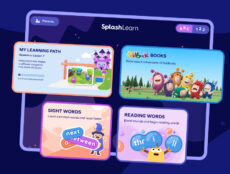
Articles
4 eLearning Design Best Practices For The Future of Mobile Learning
By eLearning Inside
November 25, 2019
These days, eLearning platforms have developed into a go-to solution to educational access for learners all around the world. Untethered from geographical boundaries, they make it possible for students to master almost any subject from wherever they happen to be. When the eLearning wave began, however, the delivery landscape looked very different than it does today.
That’s because, in the early aughts, desktop computers were the kings of the information superhighway. By 2016, they had been surpassed by mobile devices as the primary way that most people access the internet. For eLearning providers, that means it is now essential to develop platforms and coursework with an eye toward responsive design that works well for small-screen delivery. Some even argue that it’s time for eLearning operators to go mobile-only.
Working with mobile, though, carries a very different set of challenges compared to designing for a desktop interface and screen size. There are, however, some basic best design practices that can make things much easier.
Consider Unified Designs
When eLearning platforms first started to provide compatibility options for mobile users, most opted to create separate mobile-friendly interfaces to complement their desktop sites. For a while, that made sense. After all, mobile users were few and far between, and most learners preferred a desktop experience. Today, that logic’s been turned on its head. For that reason, it’s a good idea for today’s eLearning platforms to adopt unified designs that provide a consistent user experience across all device types. An excellent example of this approach may be found at CoursesOnline. The site features a responsive design that looks the same when viewed on a desktop browser or a mobile device – delivering a user-friendly interface that works just as well on smaller screens as it does for big ones.
Adopt a Minimalist Approach
In designing interfaces and courses, it’s also a good idea to embrace a minimalist approach wherever possible. That doesn’t mean it’s necessary to leave out information – it should just be delivered in the smallest possible chunks, and in ways suited for small screens. To do that, consider:
- Limiting each information screen to a single idea
- Simplifying phrases and shortening sentences
- Highlighting important information for easy digestion
- Using visual aids like charts to replace text wherever possible
By adjusting content to favor the most direct, clutter-free types of presentation, learners will get the intended message no matter how they’re accessing it.
Favor Microlearning
One of the realities that eLearning designers have to adapt to when considering mobile users is the fact that they’re not going to approach a course in the same way as they would on a desktop. In fact, there’s a good chance that they will be trying to get through the course while dealing with all manner of interruptions and distractions. Since it is well known that interruptions don’t lend themselves well to quality learning experiences, it’s a good idea to favor microlearning to mitigate the impact that they’ll have on the mobile learner. As it turns out, microlearning is just right for mobile users, with research indicating that the most effective microlearning experiences are between two and five minutes long – perfect for learners on the go.
Design for Least Interaction Cost
Since mobile devices present such unique information delivery challenges, particularly from an eLearning standpoint, it’s vital to make attempts to strip away all parts of the experience that detract from the learning itself. That means aiming for designs that have the least possible interaction cost to the mobile user. That means making an effort to:
- Ensure fast page load times
- Reduce the need for user interactions (typing, touching, scrolling)
- Avoid splitting users’ attention (including graphics that require text-based context, or other mixed-media approaches)
- Require multi-page information synthesis
In short, every time the user must complete a task other than absorbing information, they’re paying an interaction cost. As designers, it’s important to take as much of that cognitive load off of the mobile learner by creating content and experiences that don’t force the viewer to do anything other than focus on the lesson they’re trying to learn.
Learning Everywhere
The best thing about doing what it takes to realign interfaces and coursework to provide the best possible mobile learning experience is that it shouldn’t take anything away from whatever desktop users remain. If anything, the changes have the effect of streamlining the experience in ways that are just as beneficial for users that have access to larger screens. In that way, eLearning operators and designers have nothing to lose and everything to gain by making these kinds of changes. After all, most experts predict that the share of mobile-only internet users is going to increase in the coming years, so this is something they’ll have to deal with sooner or later.
This guest post has been brought to you by CoursesOnline.
Featured Image: NordWood Themes, Unsplash.









No Comments